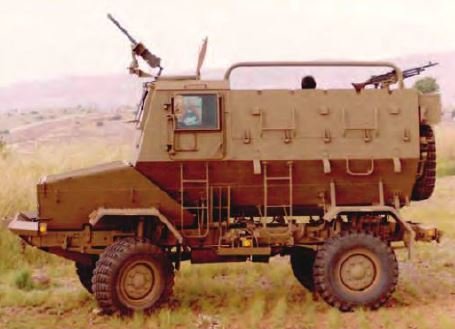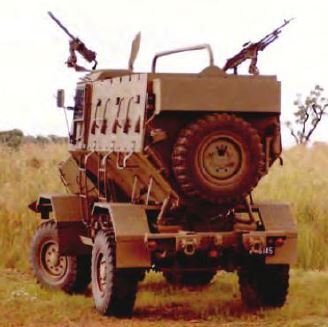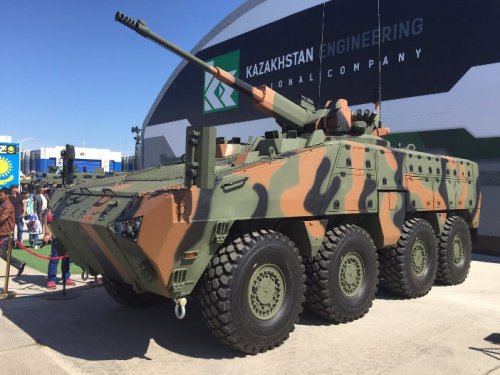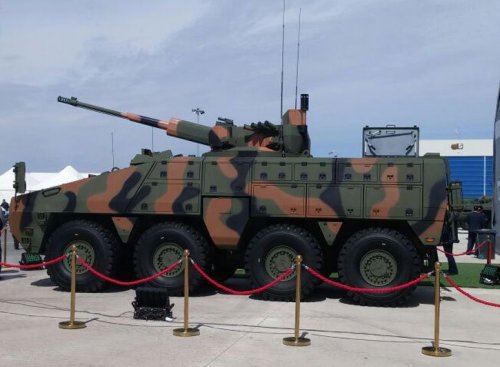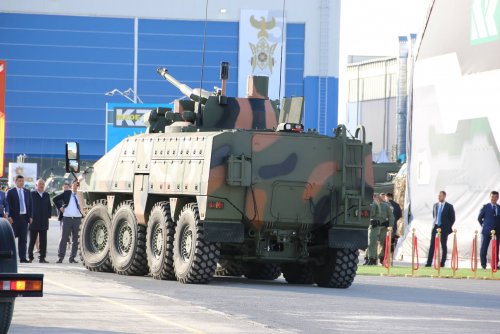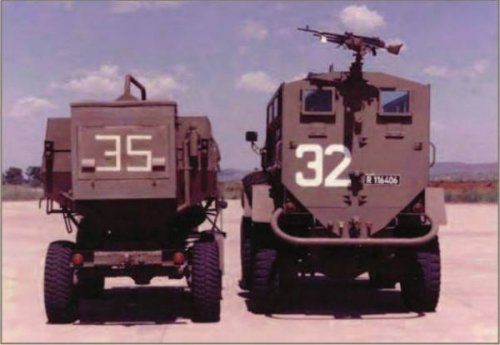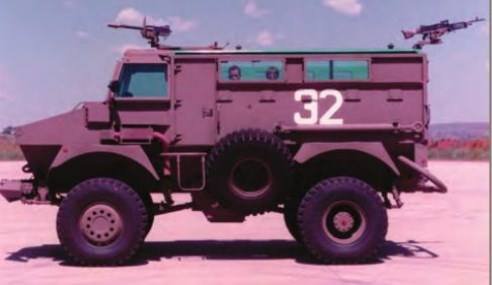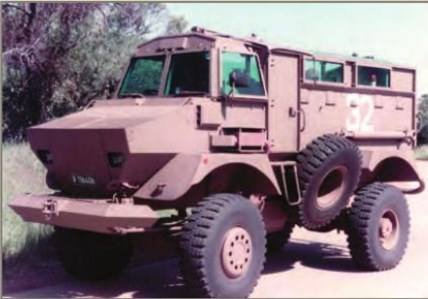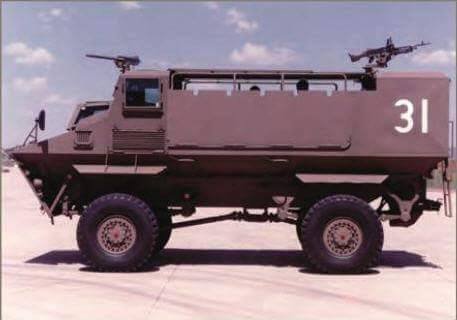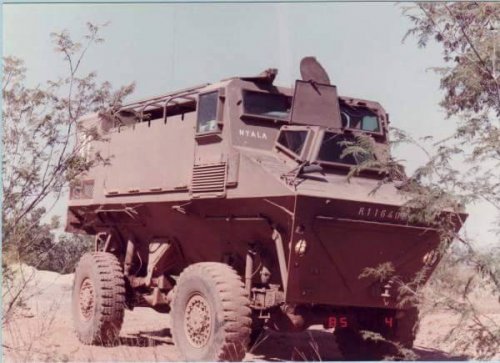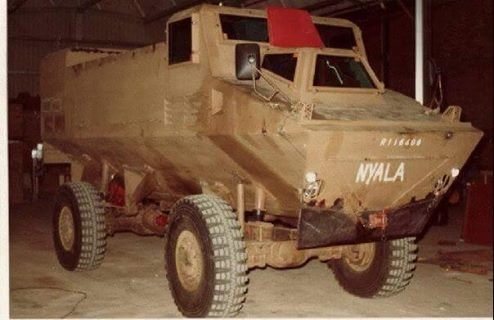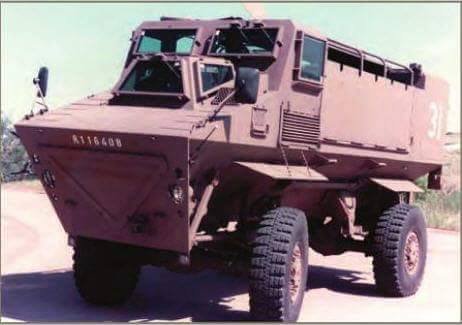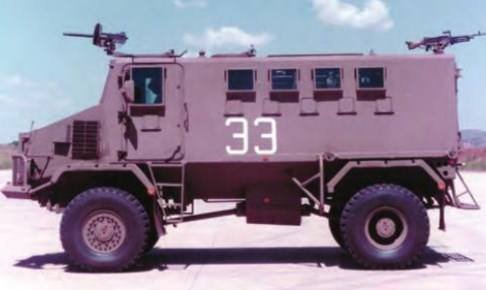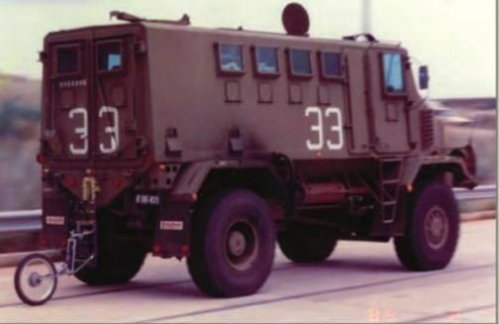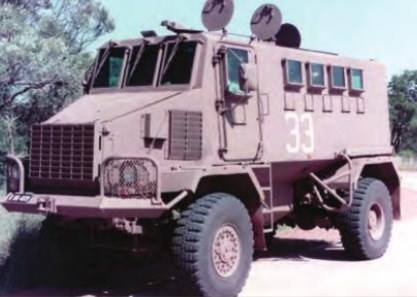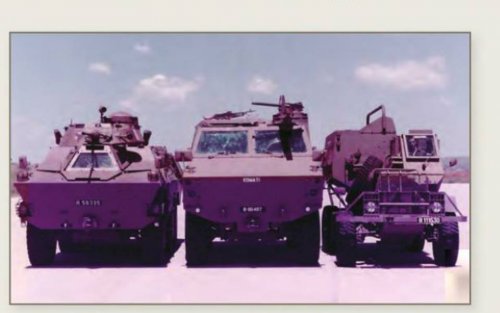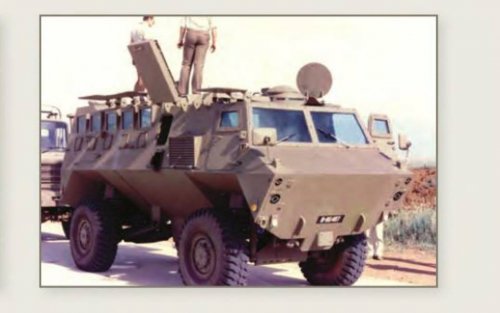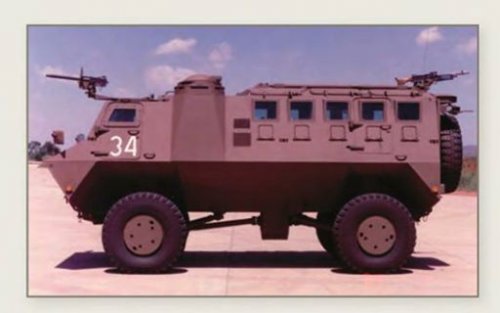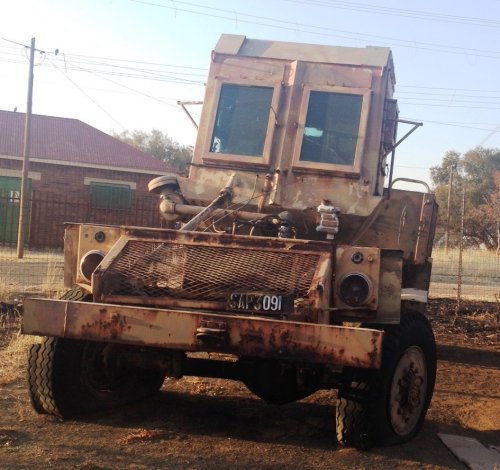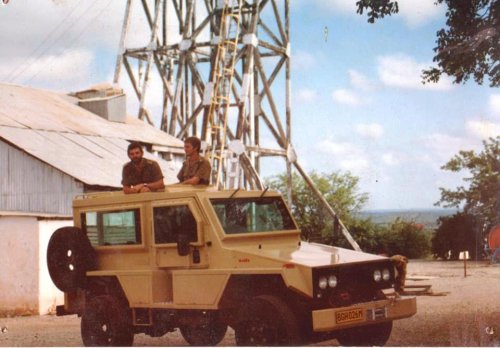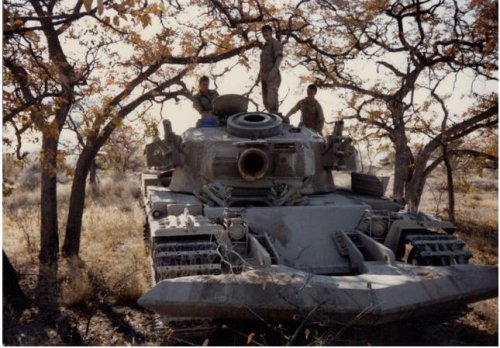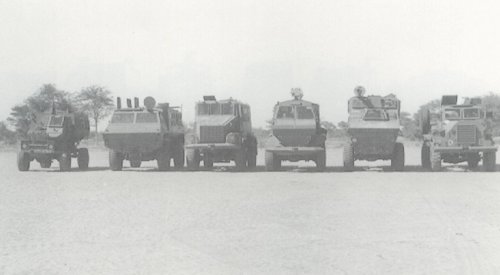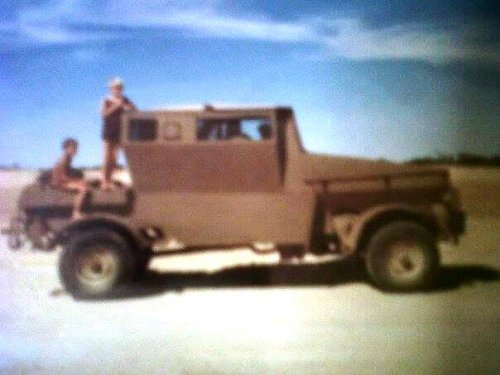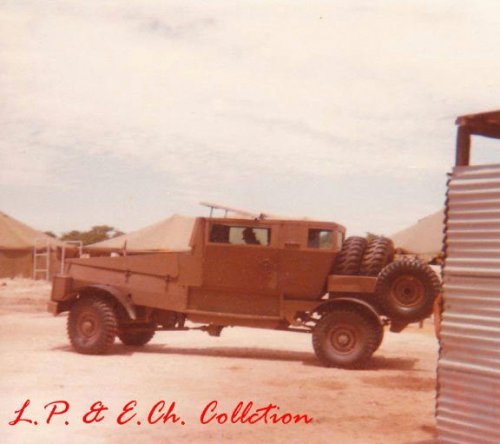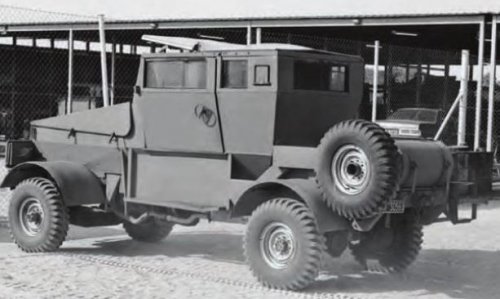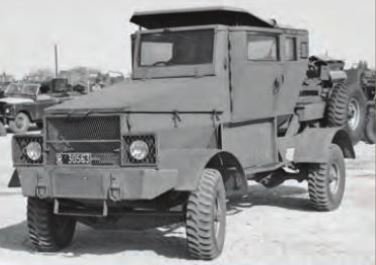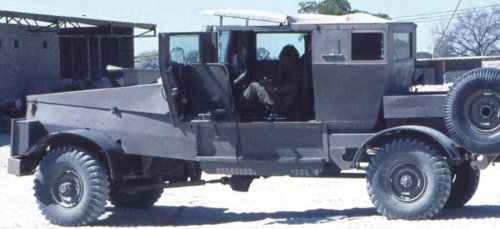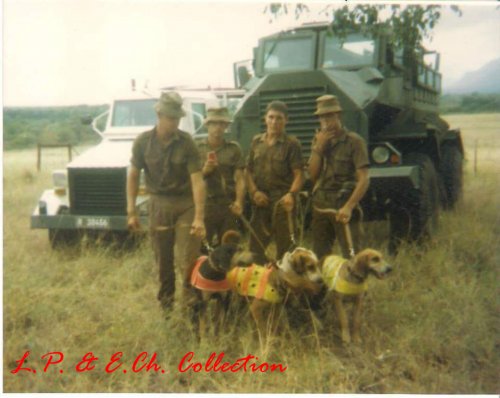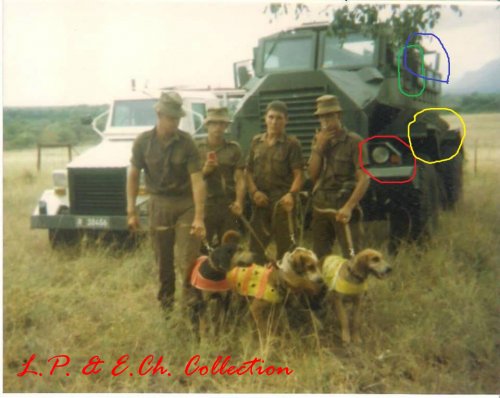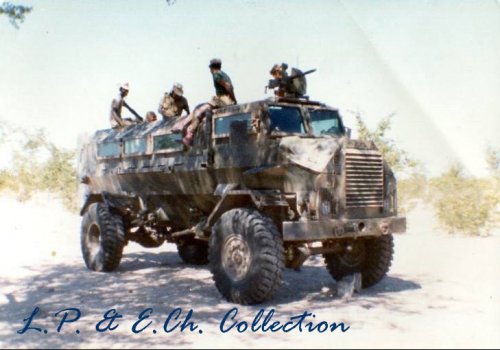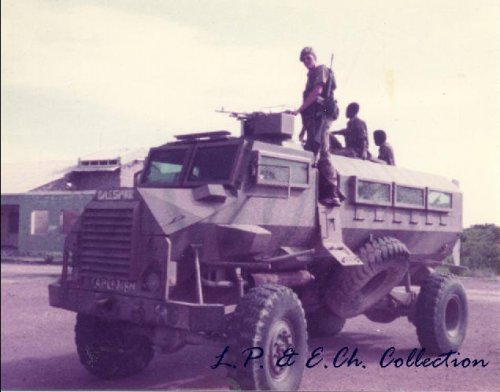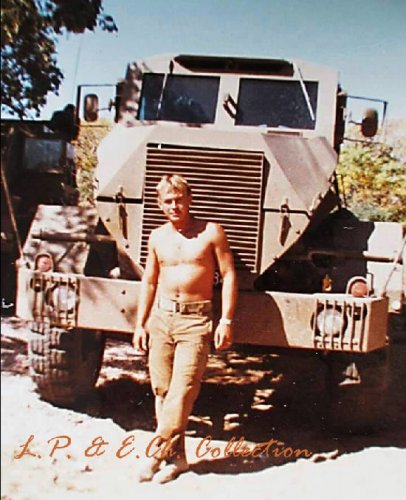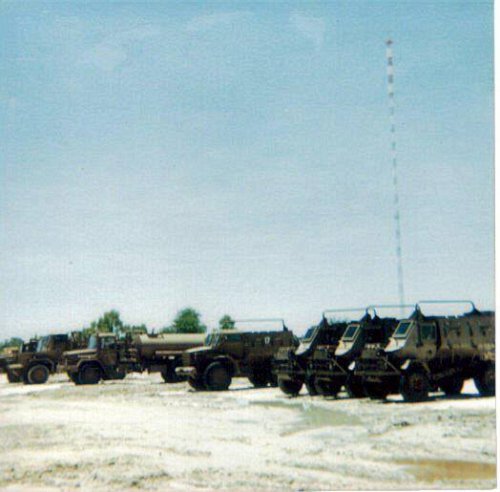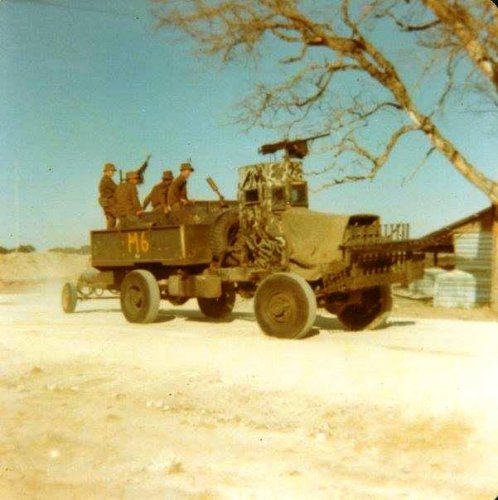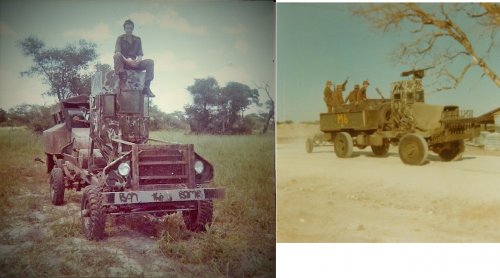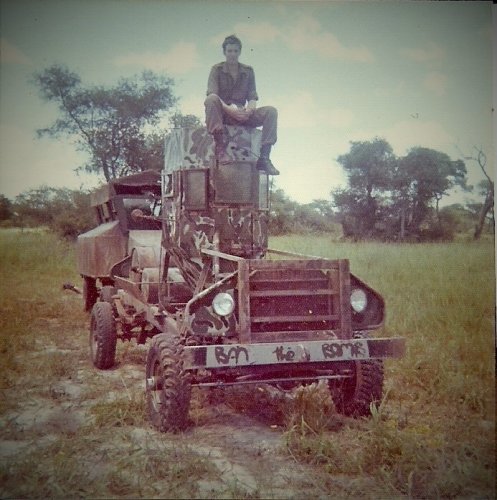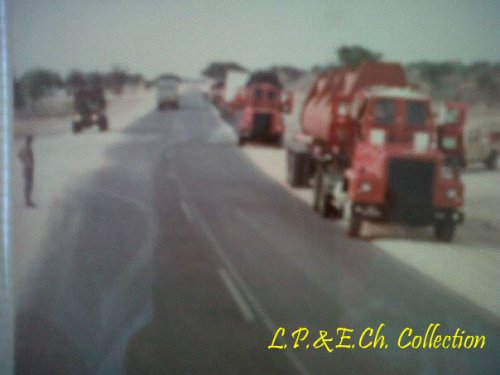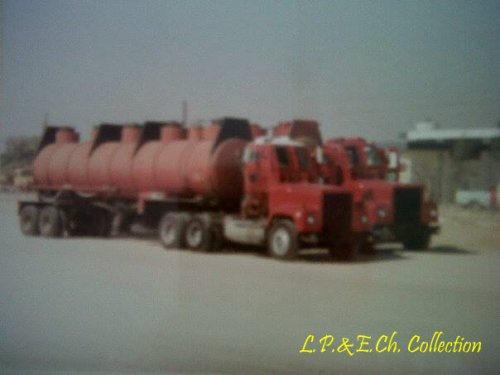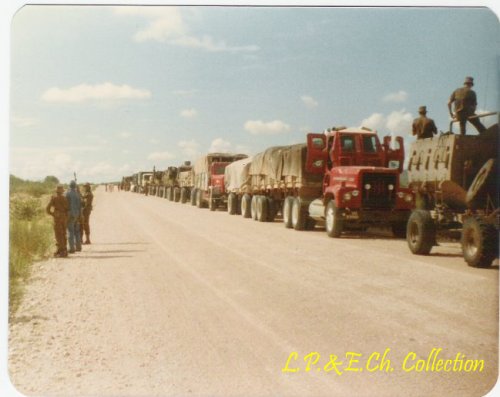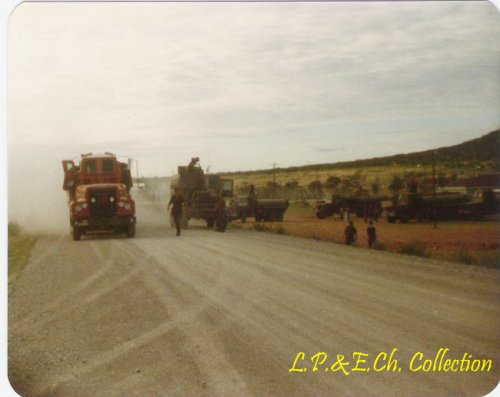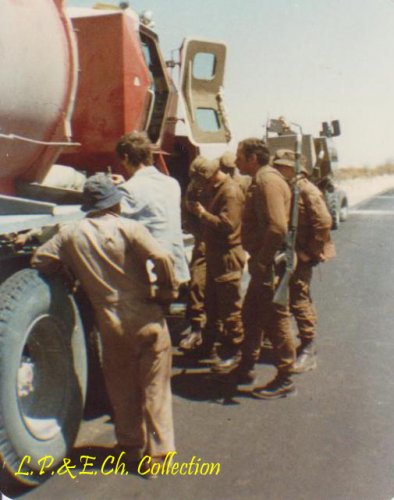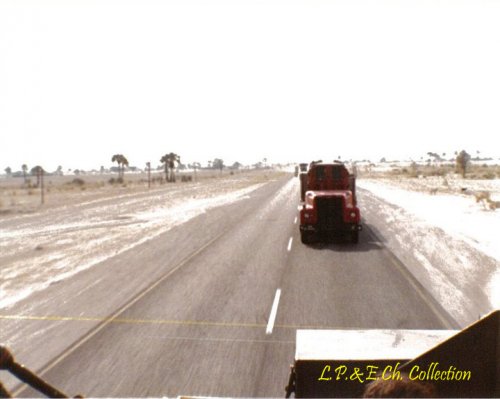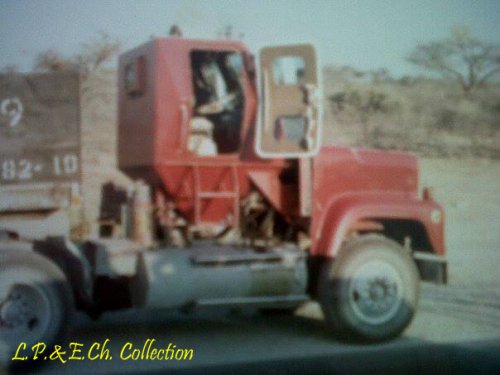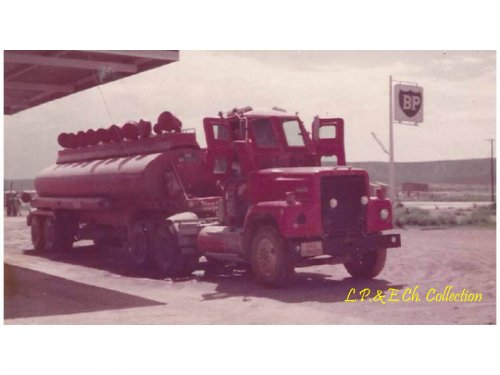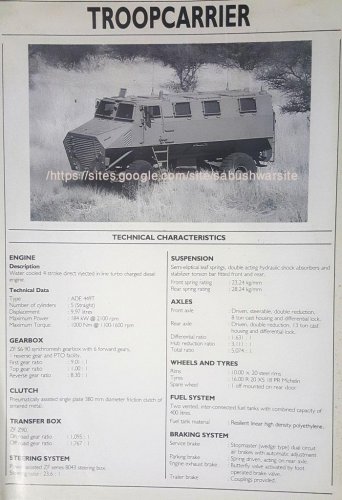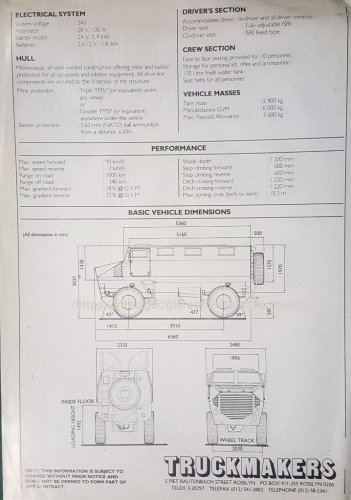- Joined
- 27 March 2006
- Messages
- 1,792
- Reaction score
- 1,304
Very nice find.
That is the Kiewiet prototype.
2 vehicles were presented to the SA Army for evaluation during 1981/2 against the requirements of Project Sireb.
This was a project looking at a Buffel replacement.
The vehicle was developed by Armscor and was based on a SAMIL-20 chassis.
This Kiewiet was one of them.
The other was the Wildebees 1, a far more advanced vehicle using a monocoque design, but with SAMIL-20 components.
These two vehicles then morphed into Project Sireb, which saw developments of the Kiewiet and Wildebees vehicles, labelled the Mark 2 in both instances, put forward. The Bulldog APC was the third vehicle trialled in Project Sireb.
The only pic I've seen of Kiewiet 2, the follow up to this vehicle, showed that it had a longer chassis, and a different front, being longer and differently shaped.
I think Project Sireb was then replaced with Project Remark a year or 2 later, which saw different, more developed and advanced vehicles tendered.
That is the Kiewiet prototype.
2 vehicles were presented to the SA Army for evaluation during 1981/2 against the requirements of Project Sireb.
This was a project looking at a Buffel replacement.
The vehicle was developed by Armscor and was based on a SAMIL-20 chassis.
This Kiewiet was one of them.
The other was the Wildebees 1, a far more advanced vehicle using a monocoque design, but with SAMIL-20 components.
These two vehicles then morphed into Project Sireb, which saw developments of the Kiewiet and Wildebees vehicles, labelled the Mark 2 in both instances, put forward. The Bulldog APC was the third vehicle trialled in Project Sireb.
The only pic I've seen of Kiewiet 2, the follow up to this vehicle, showed that it had a longer chassis, and a different front, being longer and differently shaped.
I think Project Sireb was then replaced with Project Remark a year or 2 later, which saw different, more developed and advanced vehicles tendered.

